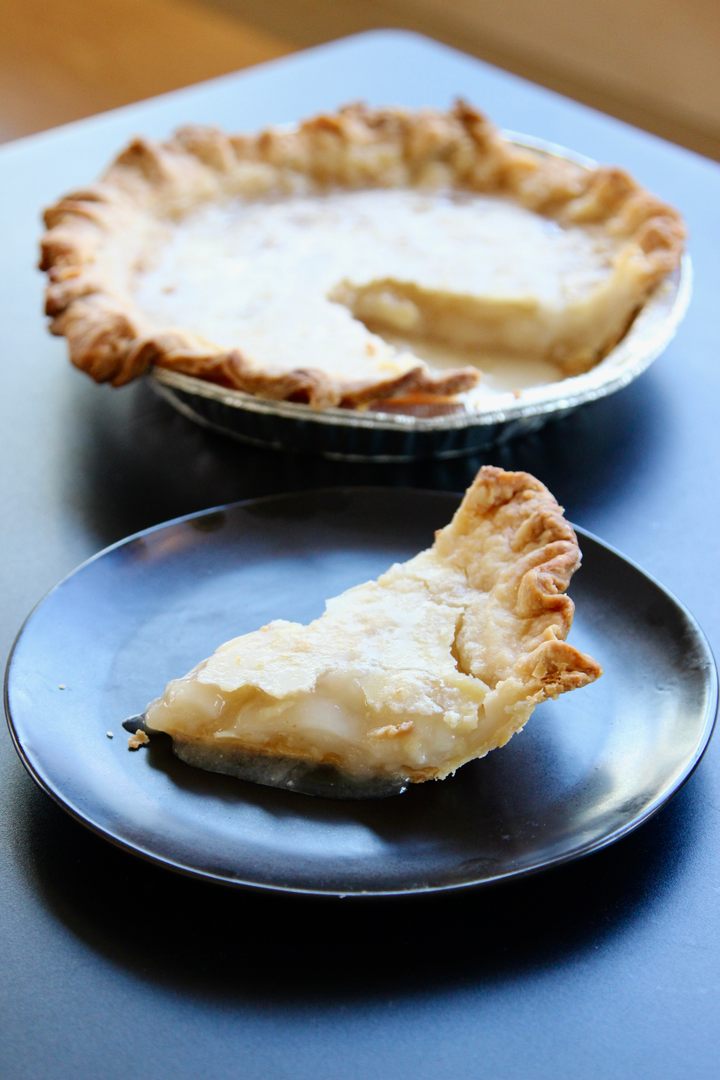

This Depression-Era Science Trick Transforms Water Into Pie
How resourceful home bakers managed to make dessert from practically nothing.
Recipes from the Great Depression carry reminders of how difficult the period was for the average American. From Depression pie—where oats make for a poor man’s substitute for pecans—to mock apple pie—in which cinnamon-scented Ritz crackers stand in for fruit—the defining feature of most of these confections is what they lack.
Even among the genre of desserts known as “desperation pies,” “hard times pie” seems particularly dire. Its other moniker, “water pie,” sounds like a practical joke or urban myth. Like stone soup, it implies conjuring something from nothing. The ingredient list is so minimalistic that it challenges what, on an existential level, even qualifies as pie. Plain, old H₂O forms the base of the filling, along with sugar, flour, butter, and a little vanilla. And yet, through a little alchemical magic, these ingredients transform into a wobbly, translucent custard.
“I think a lot of Depression-era cooking was really quite genius,” says Genevieve Yam, an editor at Epicurious who previously worked as a pastry chef at Per Se and Blue Hill at Stone Barns. Yam finds something intriguing about the anonymity of the inventors of these resourceful recipes. No one knows who was behind the first “magic cake” or “wacky cake,” although we can surmise they were women with a better grasp of chemistry than history ever gave them credit for.
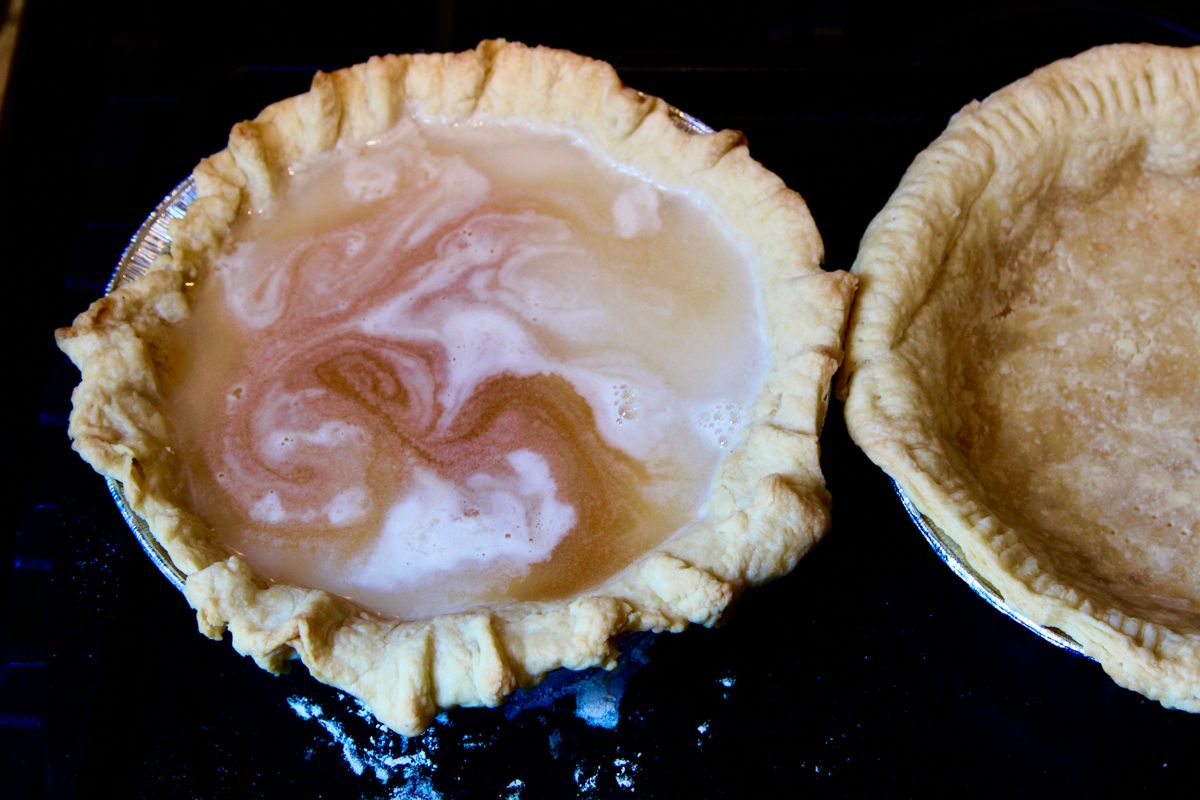
“You had to make the most of what you had access to,” Yam says. “Oftentimes, that wouldn’t necessarily be the most delicious thing. It’s not necessarily intuitive, for example, to put mayonnaise in a chocolate cake when you’re out of butter, but it works, since mayonnaise is just oil emulsified with egg.”
According to Harold McGee, the James Beard award–winning author of On Food and Cooking: The Science and Lore of the Kitchen, the reason that water pie works is fairly simple. While a lemon meringue or other custard pie relies on eggs to set, in its most elemental form, a custard can be thickened with nothing more than starch.
“If you think about mixing flour or cornstarch and water, the consistency you get will depend on the proportions,” McGee says. “So if you’re adding a little cornstarch to thicken a stir-fry, you’ll end up with something sauce-like, but on the other extreme, Turkish delight is essentially a gel of cornstarch and sugar and nothing else. [Water] pie is essentially in the middle of those two extremes.”
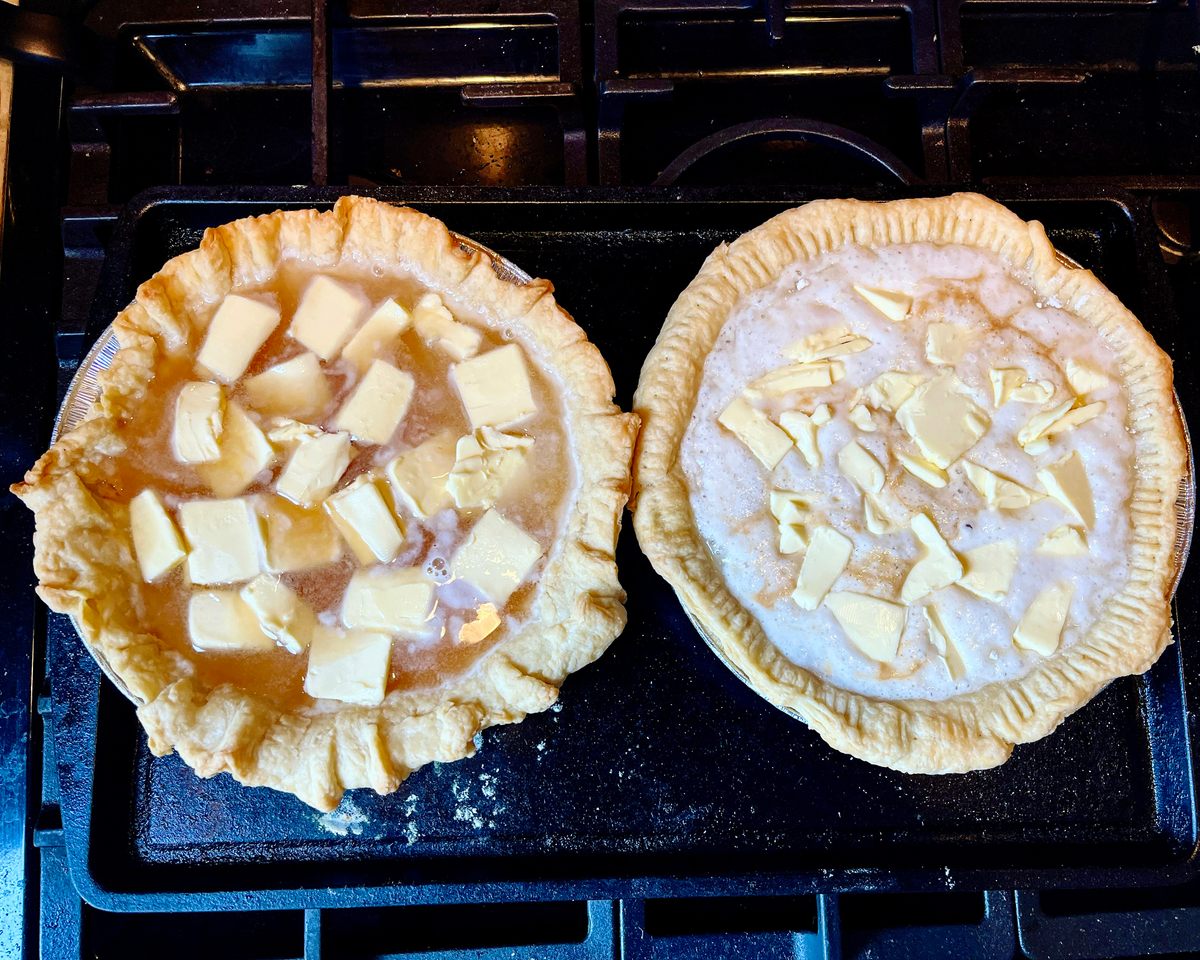
As the pie heats in the oven, the sugar melts, the butter emulsifies, and the flour leaches just enough starch to bind the whole mixture. “These cooks had to have some knowledge of baking science,” Yam says. “That ingenuity and desire to be more efficient in how you cook applies today, especially in a pandemic era and with inflation being what it is right now.”
Although shortages in the United States are not at Great Depression levels, global food prices are currently at a record high and food insecurity is rising sharply. Perhaps that’s why dishes from this grim period have become recent objects of fascination. Although hard times pie was largely forgotten once the economy improved, it’s having something of a comeback. Both YouTube and TikTok contain dozens of videos, some with millions of views, featuring incredulous bakers making their own renditions of water pie and its later iteration, Sprite pie. When it came to the former, some were less than delighted with the gelatinous filling and one recipe tester called it the “strangest thing I’ve ever tried.”
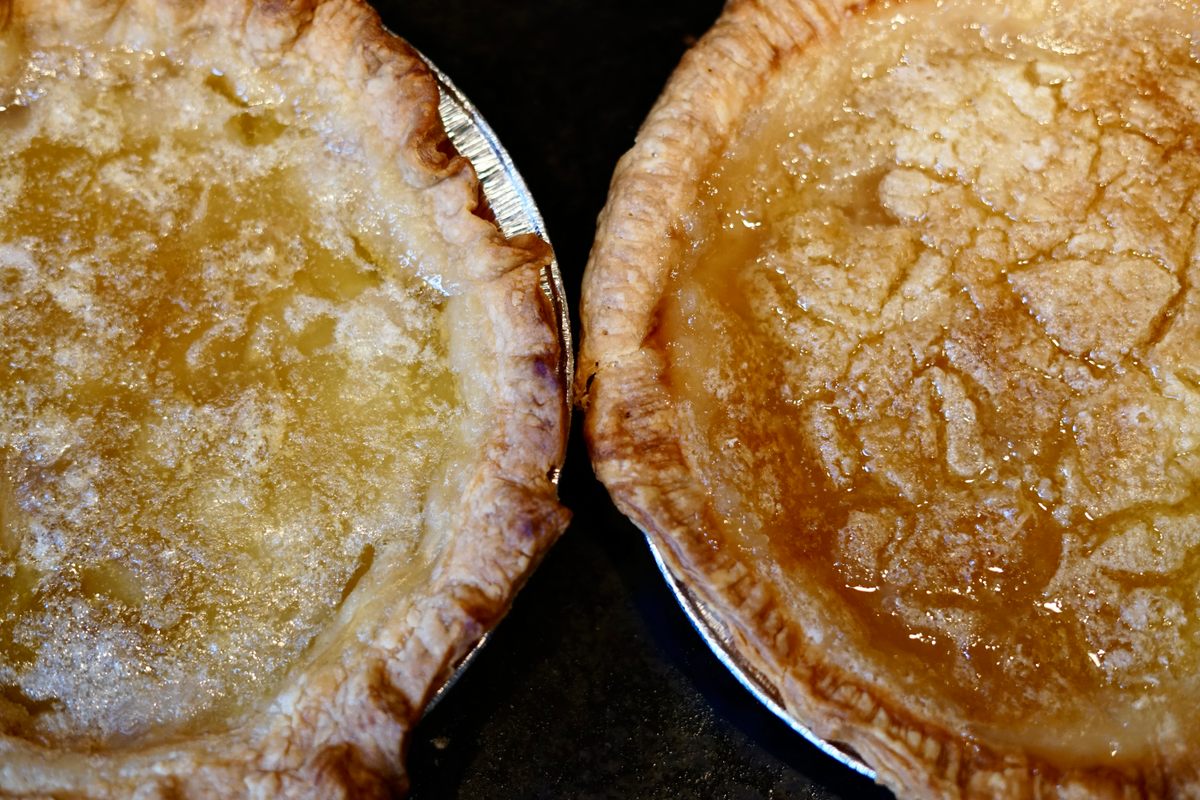
What’s more, although water pie may seem like an oddity, it’s a surprisingly close relative of a number of other confections, some of which have more successfully stuck around. An Amish cinnamon pie is essentially water pie with added spice, while chess pie, a richer custard with plenty of egg yolks and butter, remains a staple throughout the south. Vinegar pie, also simply called “desperation pie” and supposedly loved by Laura Ingalls Wilder, adds a few eggs and a spoonful of acidity. It’s good enough that it’s found a modern-day fanbase that includes chefs like Houston’s Chris Shepherd.
“[Water pie] really reminds me of Canadian butter tarts,” Yam points out. Although the end result is different, it’s still a gooey amalgamation of butter and sugar far greater than the sum of its parts. “I’m fascinated by a lot of Depression-era desserts, where I think a lot of different cultures had access to similar ingredients. It’s amazing to see all the desserts that were born of that.”
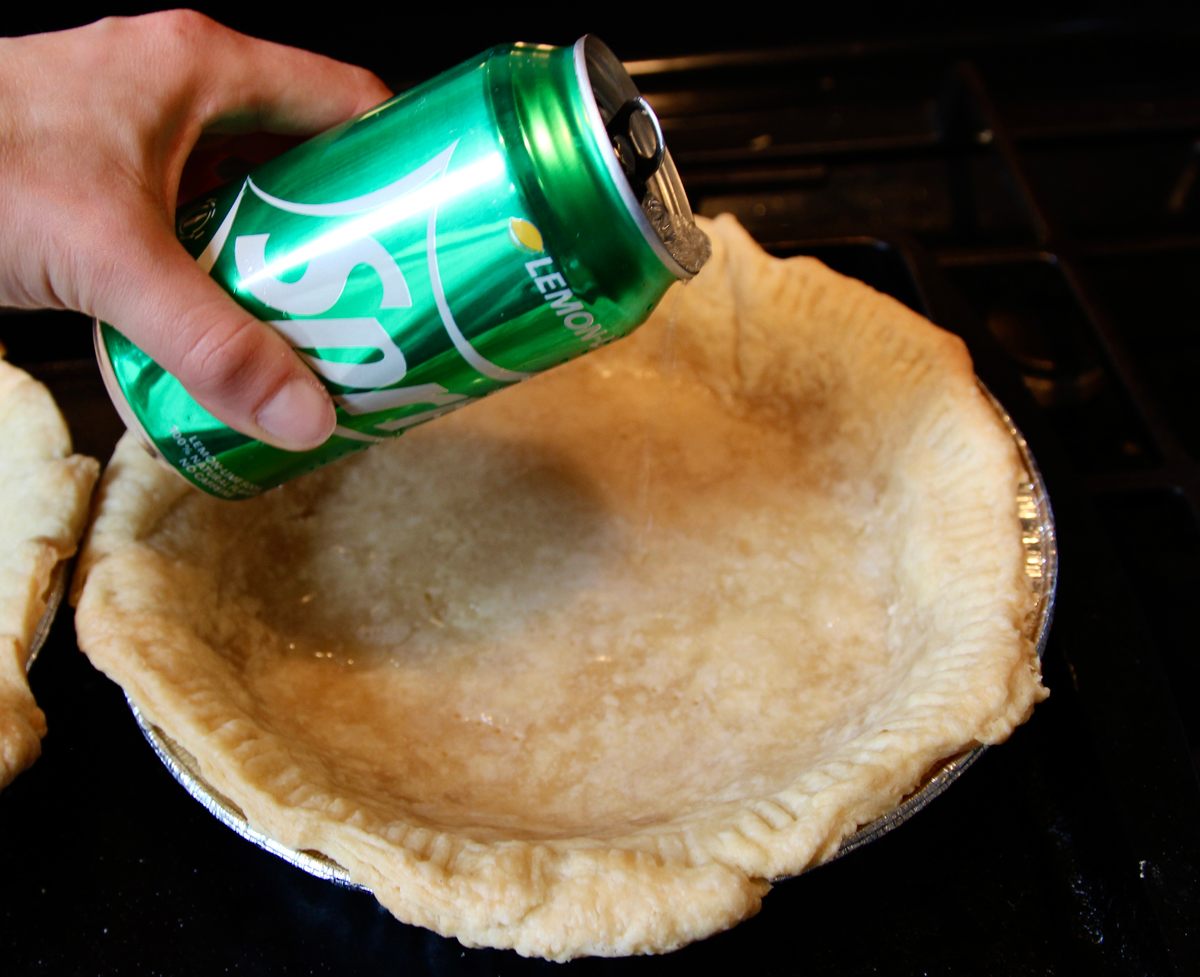
Even after going too deep down a YouTube rabbit hole, I remained skeptical. So, armed with several recipes and Gastro Obscura’s blessing, I set out to bake both a water pie and a Sprite pie. Save for the substitution of Sprite for water, the two fillings were identical. Although I adhered closely to the original recipes, I added salt for a more balanced flavor profile and opted to prebake the crusts, with the hope that the added step would keep the whole thing from dissolving into a soggy mess.
After an hour in the oven, the results were less than promising. While the Sprite pie had a relatively homogenous texture and appeared somewhat set, the water pie remained molten with visible puddles of butter slicked across the surface. One friend likened the latter to a “car crash” and another remarked that the Great Depression was even worse than they thought.
Still, I remained cautiously optimistic. My kitchen smelled amazing, courtesy of the Maillard reaction and four full sticks of butter bronzing in the oven. Undeterred, I followed the instructions and allowed both pies to chill overnight.
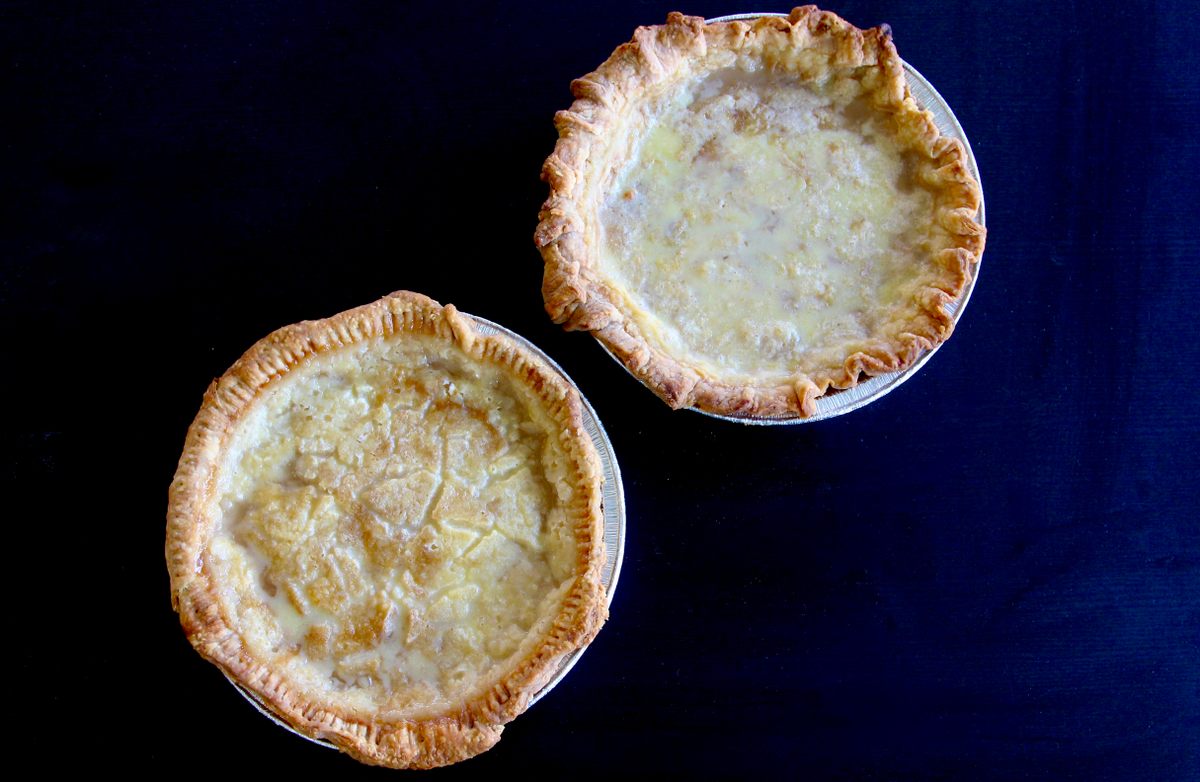
By the next morning, both soupy fillings had coalesced into something recognizable as pie. With their pale color and mottled surfaces, neither would win any beauty contests, but they sliced cleanly. Vanilla and butter dominated the flavor profiles, with a heavy hit of unchecked sweetness from the sugar. Despite their similar ingredient lists, the two pies were dramatically different. Citric acid provided a welcome counterbalance in the Sprite pie. Some tasters enjoyed the added complexity of the lemon-lime flavorings, while others found them off-putting.
“The carbonation is going to help mix things and introduce gas bubbles in the mixture, which are going to then puff up as the mixture begins to set,” McGee explains. “Another aspect to think about is because Sprite has more sugar, that also means it has proportionally less water.” All that extra sugar makes for a more visually appealing, caramelized top. Even with less water, however, the Sprite-based custard is noticeably weepier, in all likelihood because the citric acid is interfering with the starch granules in the flour.
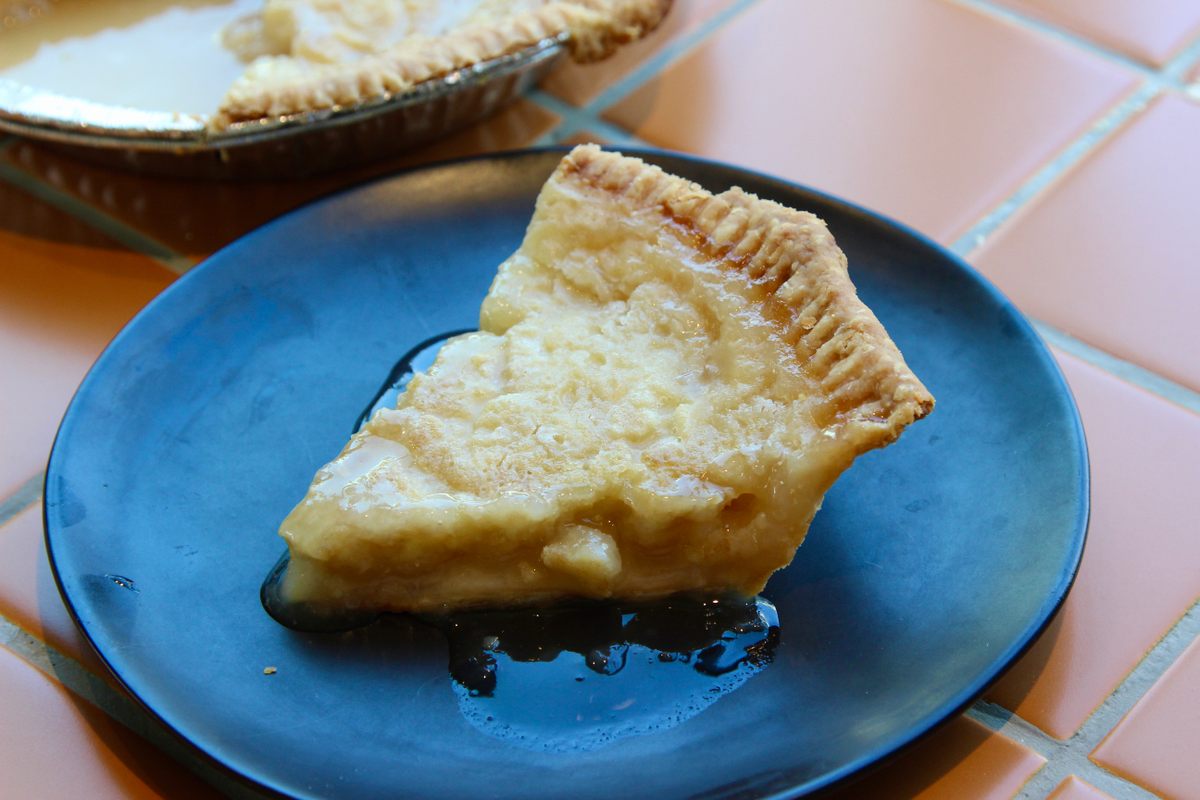
Yam notes that when times are not quite as hard, a water pie recipe could easily serve as a jumping-off point for all sorts of variations. Some grandma-inherited water pie recipes do incorporate egg yolks, which will make for a richer, golden custard more akin to a Portuguese egg tart. A dash of nutmeg or a final dusting of powdered sugar, à la chess pie, would do wonders here.
Given that this dish was created in the spirit of improvisation, however, Yam sees no reason why present-day home cooks couldn’t take matters further. Add in instant espresso powder instead of vanilla and substitute brown sugar for a coffee-toffee pie, she suggests, or experiment with Earl Grey tea or even matcha instead of water.
Since Sprite pie has enjoyed a TikTok-fueled resurgence over the last two years, it was inevitable that someone tried to make a hard kombucha variation—with predictable results. “I mean, you could try something with White Claw,” Yam says with a laugh. “But that sounds absolutely terrible.”
Ultimately, a dish named for “hard times” is never going to be glamorous. It’s a testament to cooks who could put food on the table when the pantry was all but bare.
Water Pie
Pie crust recipe adapted from Alison Roman. Water pie filling adapted from Southern Plate.
For the Pie Crust:
1 ¼ cup all-purpose flour
1 teaspoon sugar
½ teaspoon kosher salt
10 tablespoons unsalted butter, cut into 1-inch pieces and chilled
2 teaspoons apple cider vinegar
¼ cup ice water, or less as needed
For the Pie Filling:
1 ½ cups water, preferably filtered
1 cup granulated sugar
1 teaspoon salt
¼ cup flour
1 tablespoon vanilla extract
6 tablespoons butter, shaved into small pieces
Pie Crust Instructions
1. Mix together the flour, sugar, and salt in a large bowl. Use your fingers to smoosh the butter cubes into long, flat, flour-covered pieces. This will create streaks of fat throughout the dough that will result in a flaky crust. Stop when the butter is mostly incorporated and evenly distributed, with a few larger pieces remaining.
2. Add the vinegar to the ice water, then slowly drizzle it over the flour mixture. Start by adding half, then incorporating it with your fingers or a spoon, then adding the rest. You may not need to use all of the water or, on a particularly dry day, you may need to add another tablespoon. Adding more water will make the dough easier to work with, but it will also encourage gluten development, which will make for a tougher pie crust.
3. Sprinkle a little flour on a clean work surface and knead the dough with the palms of your hands. It should look shaggy and just barely hold together. Use your palms to smear the dough across the flat surface, creating long streaks of butter. If the dough is too dry to work with, you can add another tablespoon or two of water.
4. Pat the dough into a round, flat disk, then wrap it tightly in plastic. Refrigerate for at least two hours or up to four days.
5. When ready to use, roll the dough out evenly to about ¼ of an inch in thickness. Start at the center and push outward with each stroke of the rolling pin. Place in a 9-inch pie pan. Trim the edges and either use your fingers or a fork to crimp the pie crust. Poke a few indentations in the bottom with a fork.
6. To blind bake the pie crust, preheat the oven to 375°F. While the oven preheats, place the pie crust in the freezer or refrigerator for 20 to 30 minute. Chilling the pie crust is not absolutely essential, but the colder the fat is when it hits the hot oven, the flakier the final result will be.
7. Cover the inside of the pie crust with a fitted sheet of aluminum foil, then add either dried beans or pie weights to the crust to help it hold its shape. Bake for 20 minutes. Remove the aluminum foil and weights, then return to the oven and bake for an additional 15 to 20 minutes. The pie should be an even shade of blonde all over, but not too dark.
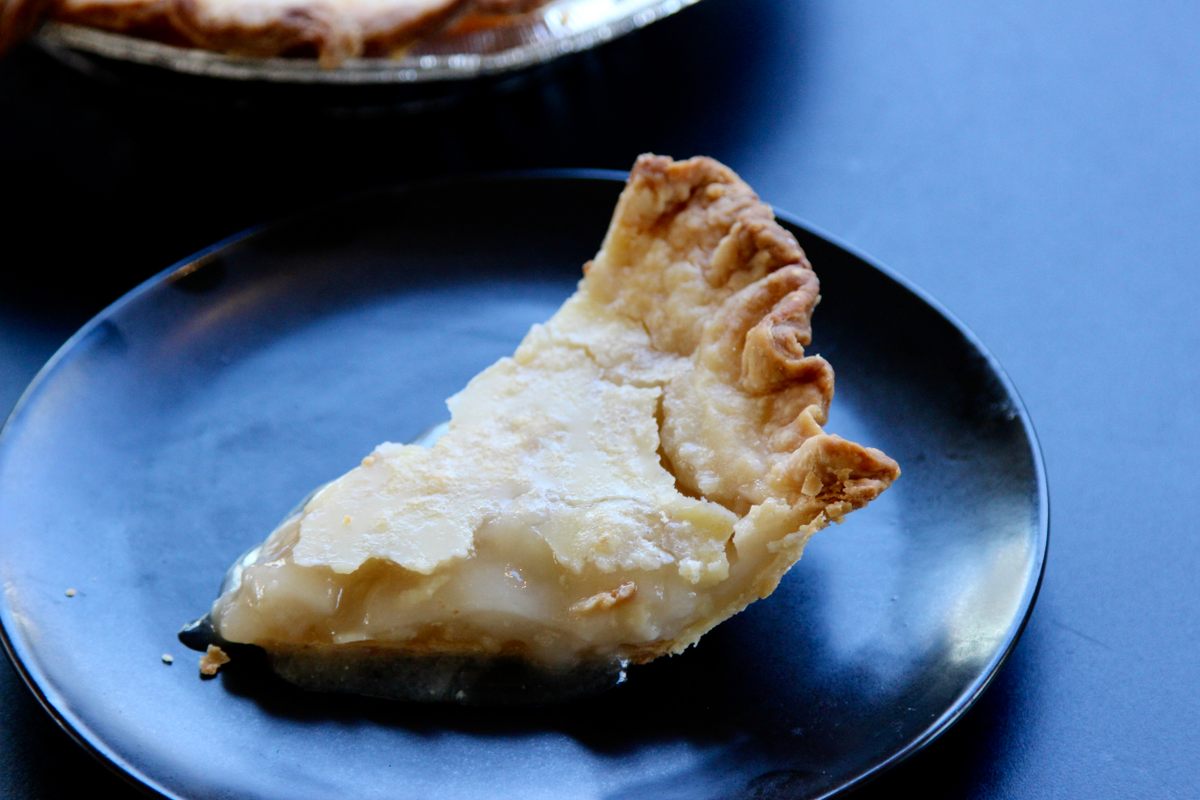
Pie Filling Instructions
1. Preheat the oven to 400°F.
2. Thoroughly mix together the sugar, flour, and salt in a medium bowl.
3. Carefully pour all of the water into the prebaked pie crust. Using a spoon, evenly sprinkle the dry ingredients mixture over the water. Try to distribute everything as evenly as possible for the best consistency. Sprinkle vanilla extract evenly over the surface. Do not mix.
4. Dot the surface of the pie with cold butter shavings as evenly as possible.
5. Place the pie in the oven and bake at 400°F for 30 minutes, then reduce the heat to 375°F and bake for an additional 30 minutes. Tent the edges of the crust with foil if they start getting too dark.
6. Remove the pie from the oven and allow it to cool completely at room temperature. Note that the pie filling will still be almost completely liquid at this stage. Once the pie is cool, place it in the refrigerator and allow it to set overnight, or for at least eight hours.
7. When the pie has fully chilled and set, carefully slice and serve using a sharp knife. Dip the knife in warm water in between slices for an even cut.
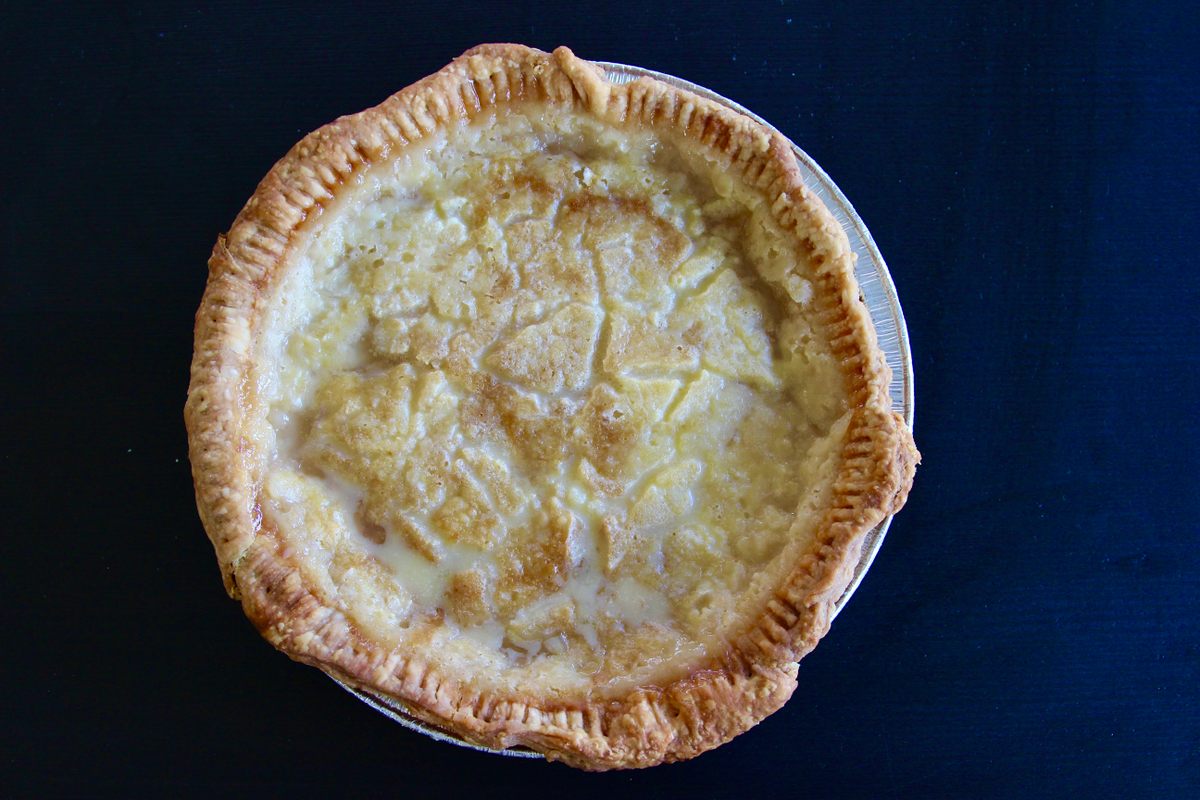
Sprite Pie
Pie Ingredients
1 pie crust, prebaked in a 9-inch pie plate, as instructed above
1 12-ounce can of Sprite
1 cup granulated sugar
1 teaspoon salt
¼ cup flour
1 tablespoon vanilla extract
6 tablespoons butter, shaved into small pieces
Pie Filling Instructions
1. Preheat the oven to 400°F.
2. Thoroughly mix together the sugar, flour, and salt in a medium bowl.
3. Carefully pour the whole can of Sprite into the prebaked pie crust. Using a spoon, evenly sprinkle the mixture of dry ingredients over the water. The mixture should foam up immediately and absorb the sugar. Try to distribute everything as evenly as possible for the best consistency. Sprinkle vanilla extract evenly over the surface. Do not mix.
4. Dot the surface of the pie with cold butter shavings as evenly as possible.
5. Place the pie in the oven and bake at 400°F for 30 minutes, then reduce the heat to 375°F and bake for an additional 30 minutes. Tent the edges of the crust with foil if they start getting too dark.
6. Remove the Sprite pie from the oven and allow it to cool completely at room temperature. Note that the pie filling will still be almost completely liquid at this stage. Once the pie is cool, place it in the refrigerator and allow it to set overnight, or for at least eight hours.
7. When the pie has fully chilled and set, carefully slice and serve using a sharp knife. Dip the knife in warm water in between slices for an even cut.
Gastro Obscura covers the world’s most wondrous food and drink.
Sign up for our regular newsletter.





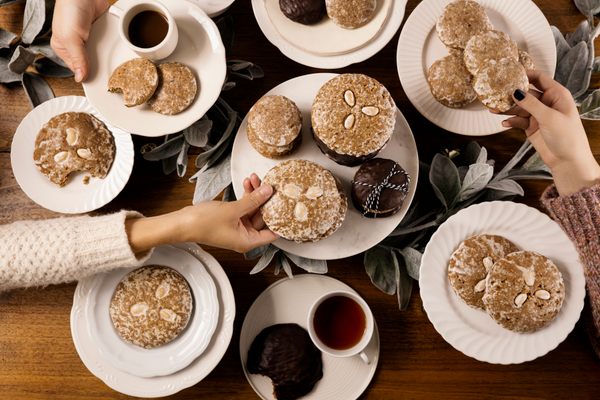























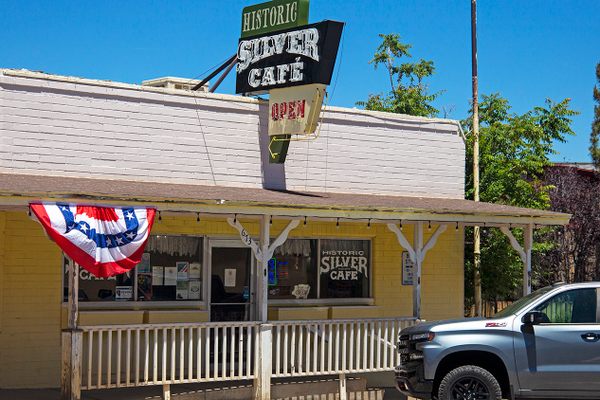


Follow us on Twitter to get the latest on the world's hidden wonders.
Like us on Facebook to get the latest on the world's hidden wonders.
Follow us on Twitter Like us on Facebook